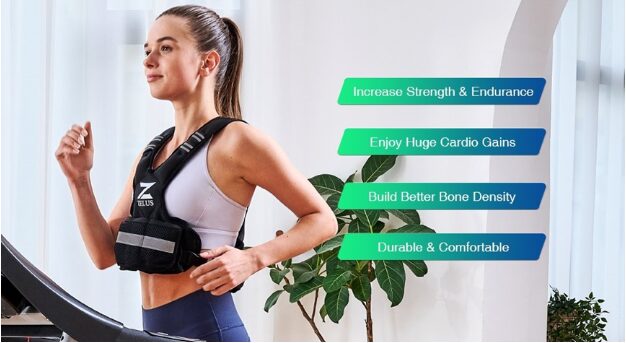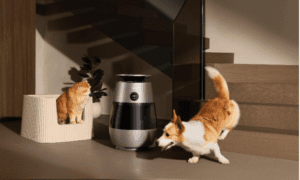When it comes to enhancing your fitness routine, few tools are as versatile and effective as the weighted vest. Whether you’re an athlete looking to improve endurance, a runner aiming for faster times, or someone who simply wants to make everyday walking and fitness routines more challenging, a weighted vest can help you achieve your goals. By adding extra resistance to your movements, a weighted vest amplifies the intensity of your workouts, helping you to build strength, improve endurance, and burn more calories in less time.
In this ultimate guide, we’ll explore how you can use a weighted vest to boost your walking, running, and overall fitness routine. We’ll cover everything from the benefits of weighted vests to the best ways to incorporate them into your workouts.
What is a Weighted Vest?
A weighted vest is a training tool designed to add extra resistance to your body while performing exercises. Typically made from durable fabrics like neoprene or nylon, weighted vests are fitted with adjustable weights that can be evenly distributed across the torso. They are available in a variety of sizes and weight capacities, allowing for gradual progression as you become stronger.
While the main purpose of a weighted vest is to add resistance to your body, they’re incredibly versatile and can be used for a range of exercises, including walking, running, bodyweight workouts, and HIIT routines. The added load forces your muscles to work harder, which leads to increased intensity and greater results.
- The Benefits of Using a Weighted Vest
Before diving into specific exercises, let’s take a look at the many benefits of incorporating a weighted vest into your fitness routine:
Increased Intensity and Challenge
One of the primary reasons people use a weighted vest is to make their workouts more intense. Whether you’re walking, running, or doing bodyweight exercises, the extra weight forces your body to exert more effort. This added intensity leads to increased muscle engagement and cardiovascular activity, resulting in more calories burned and improved fitness.
Improved Cardiovascular Health
By adding weight to your body, you increase the resistance against which your heart must pump blood. This elevated effort strengthens your heart, boosts circulation, and improves overall cardiovascular endurance. Over time, this can result in lower resting heart rates, improved stamina, and better overall heart health.
Enhanced Muscle Strength and Endurance
The added resistance helps activate more muscle fibers, which results in improved muscle strength and endurance. For example, when running or walking with a weighted vest, your leg muscles, core, and even your upper body will work harder to stabilize the additional load, helping to build muscle strength and endurance.
Accelerated Weight Loss
Using a weighted vest for workouts increases the energy expenditure of your exercises. The extra weight requires more energy to move, resulting in a higher calorie burn during both the workout itself and the recovery period. This makes the weighted vest an excellent tool for those aiming to lose weight or improve their body composition.
Improved Bone Health
The added weight placed on your bones during walking or running helps stimulate bone growth. This can be especially beneficial for preventing osteoporosis and maintaining healthy bone density, particularly as you age.
- How to Use a Weighted Vest for Running
Running is one of the most common ways to use a weighted vest for running. Whether you’re training for a race or looking to add an extra challenge to your runs, wearing a weighted vest can significantly boost the intensity of your workout.
Start Slow
If you’re new to using a weighted vest for running, it’s important to start slowly. Begin with a light vest, ideally one that adds around 5% to 10% of your body weight, and use it for shorter runs. This will allow your body to adapt to the extra resistance without overloading your muscles and joints.
Progress Gradually
As your body becomes accustomed to running with a weighted vest, you can gradually increase the weight. However, it’s important to avoid going too heavy too quickly. Adding weight too rapidly can increase the risk of injury, especially to your joints and muscles. Aim for small increases in weight and use the vest for shorter, interval-style runs until you feel ready for longer runs.
Focus on Form
The added resistance of a weighted vest can throw off your form if you’re not careful. Ensure that you maintain good running posture, keeping your chest up, shoulders back, and arms moving efficiently. The additional weight should be evenly distributed across your torso to minimize strain on your body.
Vary the Terrain
Incorporating different terrains into your runs with a weighted vest can further increase the challenge. For instance, running uphill or on uneven terrain requires more effort from your leg muscles and can help improve strength and endurance. Using a weighted vest for running on inclines will add an additional layer of difficulty, promoting greater muscle engagement and calorie burn.
- How to Use a Weighted Vest for Walking
Walking with a weighted vest for walking is an excellent way to boost the effectiveness of what would otherwise be a low-intensity workout. It can be used for leisurely walks or power walks, and the extra weight increases the intensity without putting strain on the joints.
Great for Beginners
For those who are new to fitness or looking for a low-impact alternative to running, walking with a weighted vest is a great option. The added weight will elevate the heart rate and make walking a more effective cardiovascular exercise. Start with a lighter vest and focus on maintaining a brisk pace.
Power Walking
If you want to take your walking workouts to the next level, try power walking with a weighted vest. Power walking involves walking at a fast pace with exaggerated arm movements, and adding the extra weight will increase the calorie burn and cardiovascular benefits. Be sure to maintain good posture throughout the walk to maximize the effectiveness of the workout.
Perfect for Low-Impact Fitness
Walking is a low-impact exercise that’s easier on the joints compared to running, making it a great choice for those recovering from injuries or joint pain. Using a weighted vest for walking adds resistance without over-stressing the body, providing a gentle but effective way to boost fitness levels.
- How to Use a Weighted Vest for Workouts
Incorporating a weighted vest for workouts offers a huge variety of benefits across multiple types of fitness routines. Whether you’re doing bodyweight exercises, HIIT training, or circuit training, the weighted vest can be an incredibly versatile tool.
Bodyweight Exercises
Many bodyweight exercises, such as squats, lunges, push-ups, and pull-ups, can be made more challenging by adding the extra resistance of a weighted vest. By incorporating a weighted vest into your workouts, you force your muscles to work harder, resulting in greater muscle activation and increased strength over time.
High-Intensity Interval Training (HIIT)
HIIT is known for its effectiveness in burning fat and improving cardiovascular fitness. Adding a weighted vest during HIIT exercises can make the routine more challenging, leading to improved results. The added resistance forces you to engage more muscle groups, and the intensity of HIIT combined with a weighted vest accelerates calorie burning.
Circuit Training
In circuit training, you perform a series of exercises back-to-back, often targeting different muscle groups. Adding a weighted vest to your circuit training routine makes each exercise more intense, improving both muscular strength and endurance. The versatility of the vest allows you to easily incorporate it into various exercises, from jumping jacks to burpees to mountain climbers.
- Choosing the Right Weighted Vest for Your Needs
When selecting a weighted vest for your workouts, it’s important to consider a few key factors:
- Weight Capacity: Choose a vest that allows you to gradually increase the resistance. Most vests offer adjustable weights, allowing you to start light and increase the weight as you get stronger.
- Fit and Comfort: Ensure that the vest fits snugly without being too tight or uncomfortable. A well-fitted vest should distribute the weight evenly across your torso, minimizing strain on your back and shoulders.
- Material: Look for a durable, breathable material that will stand up to regular use. Neoprene, nylon, and mesh are popular materials for weighted vests, as they’re both durable and comfortable.
- Purpose: Consider the specific exercises you’ll be using the vest for. Some vests are designed specifically for running, while others are more versatile and suited for a range of exercises.
Conclusion
A weighted vest is a simple but highly effective way to boost the intensity of your walking, running, and fitness workouts. By adding extra resistance to your body, you can improve cardiovascular health, build strength, burn more calories, and enhance overall fitness. Whether you’re looking to improve your running speed, build muscle endurance through walking, or take your workouts to the next level, a weighted vest is an excellent investment for anyone serious about fitness.
With the right vest and a gradual progression plan, you can begin reaping the benefits of this versatile training tool. Start incorporating a weighted vest into your routine today, and watch as it helps you unlock new levels of performance in your walking, running, and overall fitness journey.



































